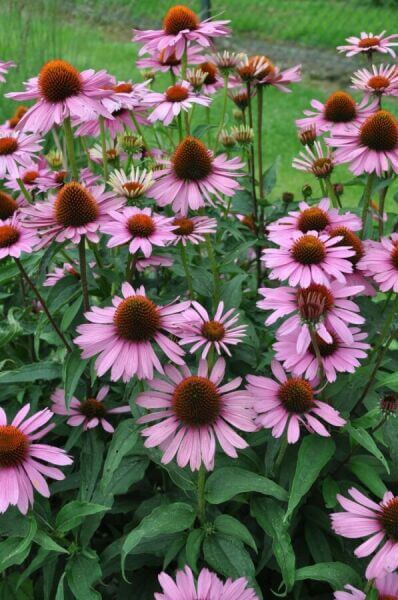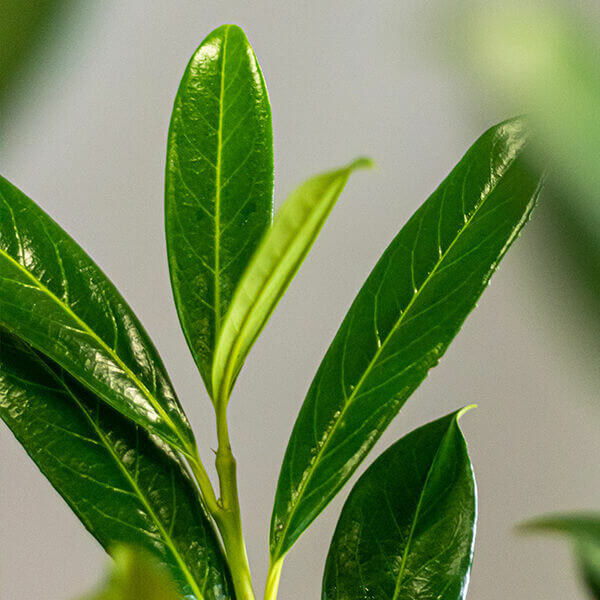Hedge Plants For Innovative Gardens
Hedge Plants For Innovative Gardens
Blog Article
Best Hedging Plants For Park Landscaping
Enhance your garden's appeal with rich hedge ranges such as Yew (Taxus), Thuja, Laurel, Photinia, and Bamboo, commemorated for their structural integrity and environmental advantages.
Yew and Thuja offer evergreen protection and winter durability, while Laurel provides rapid growth and broad, aromatic leaves.
Photinia adds seasonal beauty with its vibrant red foliage, and Bamboo provides a low-maintenance, tranquil ambiance.
These hedges enhance air quality, reduce noise, and develop tranquil, private areas.
Proper planting, spacing, and maintenance make sure energetic growth and environmental consistency.
Explore how these lavish varieties can elevate your garden's appeal and wellness.
Key Takeaways
Transform Your Garden With Lush Hedge Ranges
- Select Yew for its thick, evergreen development and unrivaled durability.
- Go with Laurel for its quick growth and broad leaves, making sure quick privacy.
- Pick Photinia for its lively seasonal foliage, which turns a striking dark red.
- Utilize Bamboo for a low-maintenance, winter-hardy hedge with aesthetic appeal.
- Space plants 2-3 per meter and prune routinely for ideal growth and health.
Popular Hedge Plants
When transforming a garden with rich hedge ranges, it's essential to consider popular hedge plants such as Yew, Thuja, Laurel, and Photinia due to their distinct attributes and advantages.
Yew (Taxus) is highly esteemed for its longevity and dense, green growth, making it a prime option for sustaining landscapes.
Thuja is kept in mind for its evergreen foliage and robust winter season strength.
Photinia includes seasonal vibrancy with red leaves that darken over time, creating dynamic visual appeal.
Laurel offers fast growth and aromatic, broad leaves, perfect for fast personal privacy.
Furthermore, Bamboo is an outstanding choice for ambiance, offering a low-maintenance, winter-hardy choice that enhances the garden's aesthetic with its stylish, swaying walking sticks.
These choices accommodate a variety of horticultural needs and preferences.
Benefits of Garden Hedges
Garden hedges provide a plethora of advantages, making them a valuable addition to any landscape. These natural barriers are cost-efficient to carry out and offer substantial wind security, enhancing air circulation and contributing to noise decrease. The thick foliage of hedges like Thuja and Beech guarantees privacy by obstructing visibility, producing a remote and serene environment.
Hedges also play an essential role in microclimate regulation, providing a steady environment that promotes plant growth and minimizes temperature fluctuations. Their intricate leaf structures filter toxins, enhancing air quality and adding to a much healthier garden community.
Additionally, hedges excel in noise decrease, soaking up and deflecting acoustic waves to lower ambient noise levels. This double functionality of providing both acoustic and visual privacy enhances the overall harmony and visual appeal of any garden.
Planting and Maintenance Tips
For an effective hedge, meticulous preparation of the planting area is vital. Ensure the soil has correct pH and drainage to support strong root advancement.
Space the plants appropriately for the picked species. Water the hedge often during its initial development phase, adjusting as required with seasonal modifications.
Implement a methodical bug control and disease prevention technique, utilizing chemical or organic treatments when essential. Regularly examine for aphids, termites, and fungal infections.
Apply mulch to maintain wetness and suppress weeds. Seasonal pruning promotes dense development and air blood circulation, necessary for plant health.
Following these guidelines will help you cultivate a vibrant, well-kept hedge that boosts the appeal of your garden.
Spacing and Cutting Standards
Spacing and Cutting Standards
Correct spacing and cutting are vital for cultivating healthy, aesthetically appealing hedges. Adequate spacing ensures each plant receives sufficient nutrients, light, and airflow.
Follow these standards for optimum hedge maintenance:
- Spacing: Position hedge plants 2-3 plants per meter to encourage robust growth.
- Pruning Techniques: Regular pruning is essential for keeping desired hedge height and shape. Cut brand-new development in summer season and cut down older wood during winter.
- Seasonal Care: Adjust trimming schedules and methods according to seasonal requirements to make sure plant health.
- Hedge Height: Regularly display and trim to maintain the desired hedge height and achieve consistent aesthetics.
Sticking to these steps will guarantee your hedge thrives, boosting both the appeal and performance of your garden.
Picking the Right Hedge
Picking the Right Hedge
Choosing the appropriate hedge involves evaluating aspects such as mature height, foliage density, and environmental resilience. Effective hedge plant choice requires understanding each species' growth characteristics and site-specific flexibility.
For instance, Yew (Taxus) offers outstanding durability and thick growth, while Thuja is notable for its winter durability. Furthermore, thinking about maintenance requirements is essential; fast-growing species like Laurel or Privet demand regular cutting, whereas low-maintenance choices like Bamboo or Ivy might be preferable for those looking for very little upkeep.
Environmental aspects such as soil type, light availability, and wetness conditions need to also assist the selection procedure. This cautious technique guarantees the picked hedges will thrive, offering both aesthetic and functional benefits to the garden landscape.
Shipment and Planting Guidance
To guarantee your hedge plants grow, they should be provided by specialized carriers and planted quickly upon arrival.
Follow these important actions for successful planting:
- Soil Preparation: Enhance the soil with raw material to enhance drainage and nutrient content.
- Planting Depth: Produce a trench two times the width and equivalent to the depth of the root ball.
- Watering Techniques: Water thoroughly after planting, keeping the soil consistently damp however not filled.
- Mulching: Apply a layer of mulch to retain moisture and suppress weeds.
Consumer Assistance and Service
Given the important role of timely support in horticultural pursuits, our consumer assistance team is available six days a week through telephone, email, and social networks to provide skilled suggestions and swiftly address any concerns. Their dedication to quick response times ensures customer complete satisfaction by dealing with inquiries associated with plant health, ideal planting methods, and maintenance schedules.

Response Time
----------------------
Within 24 hours
This extensive support group, enhanced by an excellent 9.3/ 10 customer rating, highlights our commitment to improving the gardening experience for every single client.
Often Asked Concerns
How Long Does It Take for Hedge Plants to Establish?
Hedge plants usually need one to 3 years to become fully established, with the precise duration varying by species and growing conditions.
Efficient care during this vital period is important for robust growth. Consistent watering, vigilant weed control, and appropriate fertilizer application are critical in promoting strong root development.
For instance, fast-growing types like Laurel may develop faster, while slower-growing varieties such as Yew might take longer. Thorough upkeep accelerates the facility process, leading to dense and healthy hedges.
What Are the Best Hedge Plants for Privacy?
The concern of the best hedge plants for personal privacy involves evaluating evergreen and deciduous alternatives.
Evergreen hedges like Thuja, Laurel, and Cypress provide year-round coverage, guaranteeing constant personal privacy.
In contrast, deciduous hedges such as Beech provide seasonal personal privacy, shedding leaves in colder months.
Secret upkeep suggestions for personal privacy hedges include regular trimming, fertilizing in spring, and proper spacing-- usually 2 to 3 plants per meter.
Furthermore, constant watering and diligent weed removal are important for promoting healthy, thick development.
Can Hedge Plants Attract Wildlife to My Garden?
Yes, hedge plants can attract wildlife to your garden by providing necessary benefits like shelter, food, and nesting sites, thus enhancing regional biodiversity. Yew, holly, and laurel are excellent for drawing in birds, while ivy supports a range of bugs.
Nevertheless, it is necessary to note that there are some disadvantages, such as increased upkeep to manage bugs and regular maintenance. Carefully picking and preserving hedge ranges can help balance these disadvantages and advantages, ultimately promoting a lively and sustainable environment in your garden.
Are There Any Flowering Hedge Plants Available?
Yes, there are flowering hedge plants offered that can boost the beauty of your garden.
For example, Elaeagnus, likewise understood as Olive Willow, produces fragrant white flowers in the fall, adding a touch of beauty.
Photinia, another popular option, showcases vibrant red leaves that mature into a rich green, developing a vibrant visual effect throughout the seasons.
To ensure these plants flourish, it's vital to practice correct pruning techniques and seasonal maintenance, such as trimming brand-new growth in the summer season and cutting back in the winter.
These steps will help preserve the health and visual appeal of your blooming hedges.
How Do I Avoid Bugs in My Hedge Plants?
To get more info avoid bugs in hedge plants, use natural bug control approaches and keep proper hedge care. Introduce helpful insects like ladybugs, which prey on harmful insects, to produce a balanced community.
Regularly check your hedges for indications of problem and quickly remove any affected parts to prevent the spread. Ensure the health of your hedges by using well balanced fertilizers and offering sufficient water.
Use mulching to keep soil moisture and appropriate spacing to decrease plant tension and promote robust development. These practices jointly assist in decreasing insect problems and preserving a healthy hedge.
Conclusion
In essence, choosing the right hedge ranges such as Yew, Thuja, and Laurel can change any garden into a relaxing haven. These plants supply year-round plant, improve aesthetic appeal, and deal practical benefits like sound reduction and wind protection.
Correct planting methods, accurate spacing, constant watering, and seasonal trimming are vital for optimum growth.
Reputable delivery services and skilled client support guarantee a seamless experience from purchase to planting, making it easier than ever to elevate your outside space.
Garden hedges use a wide variety of benefits, making them an important addition to any landscape. These natural barriers are affordable to implement and offer significant wind security, enhancing air flow and contributing to noise reduction. The thick foliage of hedges like Thuja and Beech guarantees personal privacy by obstructing exposure, creating a secluded and tranquil environment.

Pruning Strategies: Routine pruning is important for maintaining wanted hedge height and shape. Cut new development in summertime and cut back older wood during winter season.
Report this page